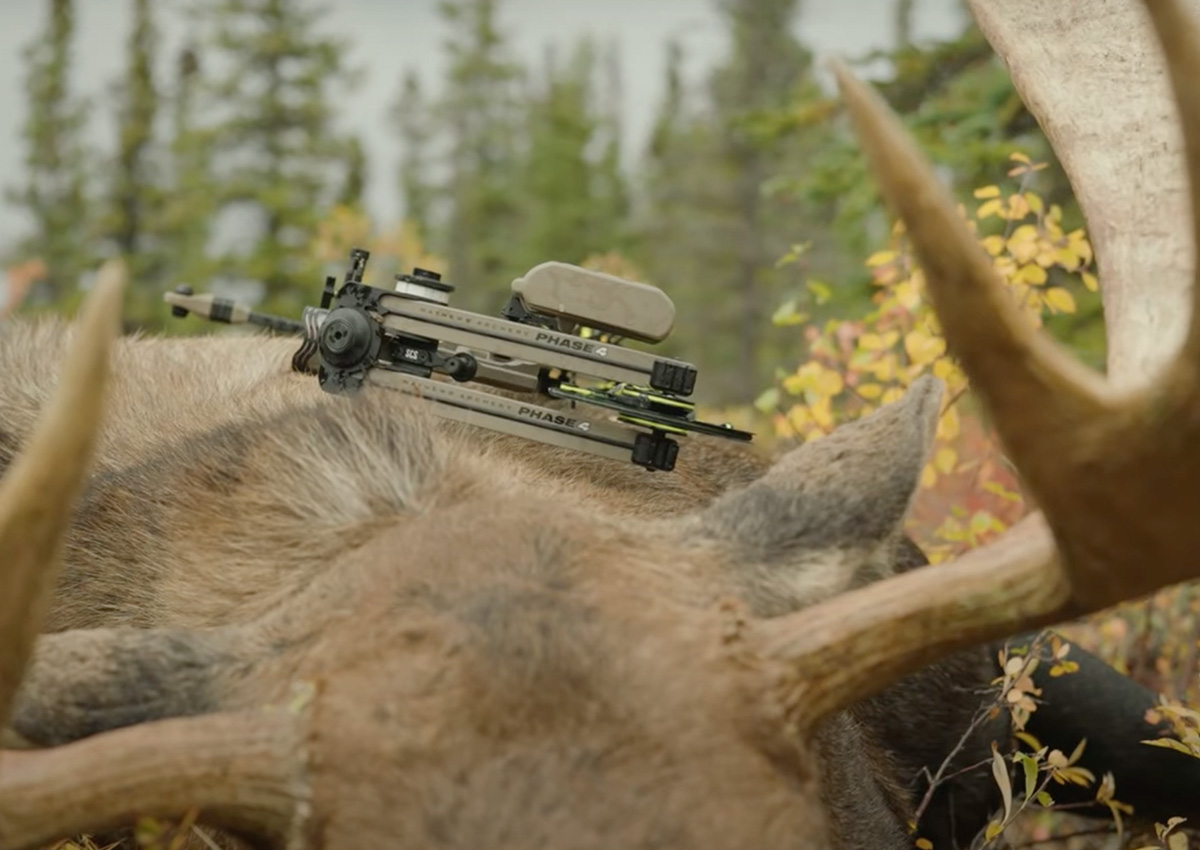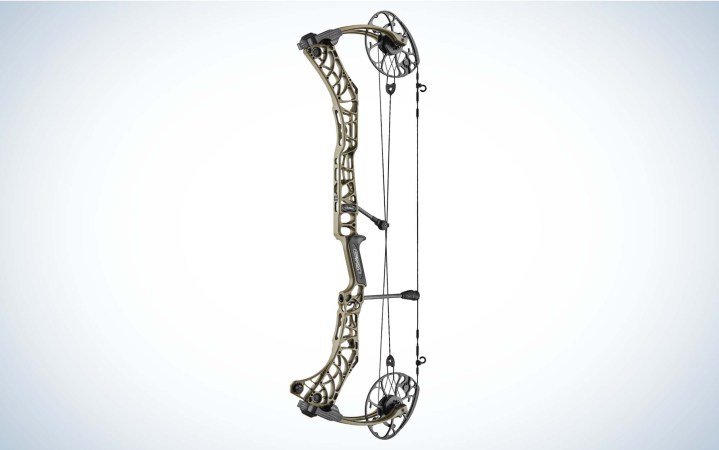We may earn revenue from the products available on this page and participate in affiliate programs. Learn More ›
The 2023 Mathews Phase 4 33 is the quietest Mathews, with the least vibration, that I’ve ever tested. It’s almost identical to the 2022 V3X 33, which I deemed last year to be the nicest compound bow I’d ever shot, except this year’s model has two key improvements. The upgrades (which I’ll get into below) make the Phase 4 33 the new nicest compound bow I’ve ever shot.
I know, I know.
“You just said last year’s bow was the best, and now you want us to believe this year’s bow is the best?”
At Lancaster Archery Supply, I review flagship hunting bows for our YouTube channel every year. I’ve shot every Mathews for the past decade and nearly every other flagship from all the major brands. That experience gives me a pretty solid baseline for making comparisons. I don’t expect Mathews to produce my favorite new bow each year. But when they do, I have to call it as I see it.
The realization that Mathews indeed did improve upon the V3X 33 this year by reducing noise and vibration that I didn’t even know existed blew me away after spending just a couple of days with the Phase 4 33. I wasn’t expecting much from Mathews for 2023 after such a stellar offering in 2022. But once bowhunters take a couple of shots with the Phase 4 33 at their local pro shops over the coming months, I think Mathews will sell a pile of them. It’s that good.
Phase 4 33 Specs and Features
- Axle to Axle: 33 inches long
- Brace Height: 6.5 inches
- IBO Speed: 336 fps
- Weight: 4.68 pounds
- Let Off: 80 or 85 percent
- MSRP: $1,399
What’s New
The specs for the Phase 4 33 are identical to last year’s V3X 33. (There’s a 29-inch Phase 4 just like the V3X 29 as well.) It even has the same cam, grip, and SwitchWeight mod system. Hold the two bows side by side, so you only see the limb profiles, and you’d swear they’re the same bow. But they’re not.
Limbs
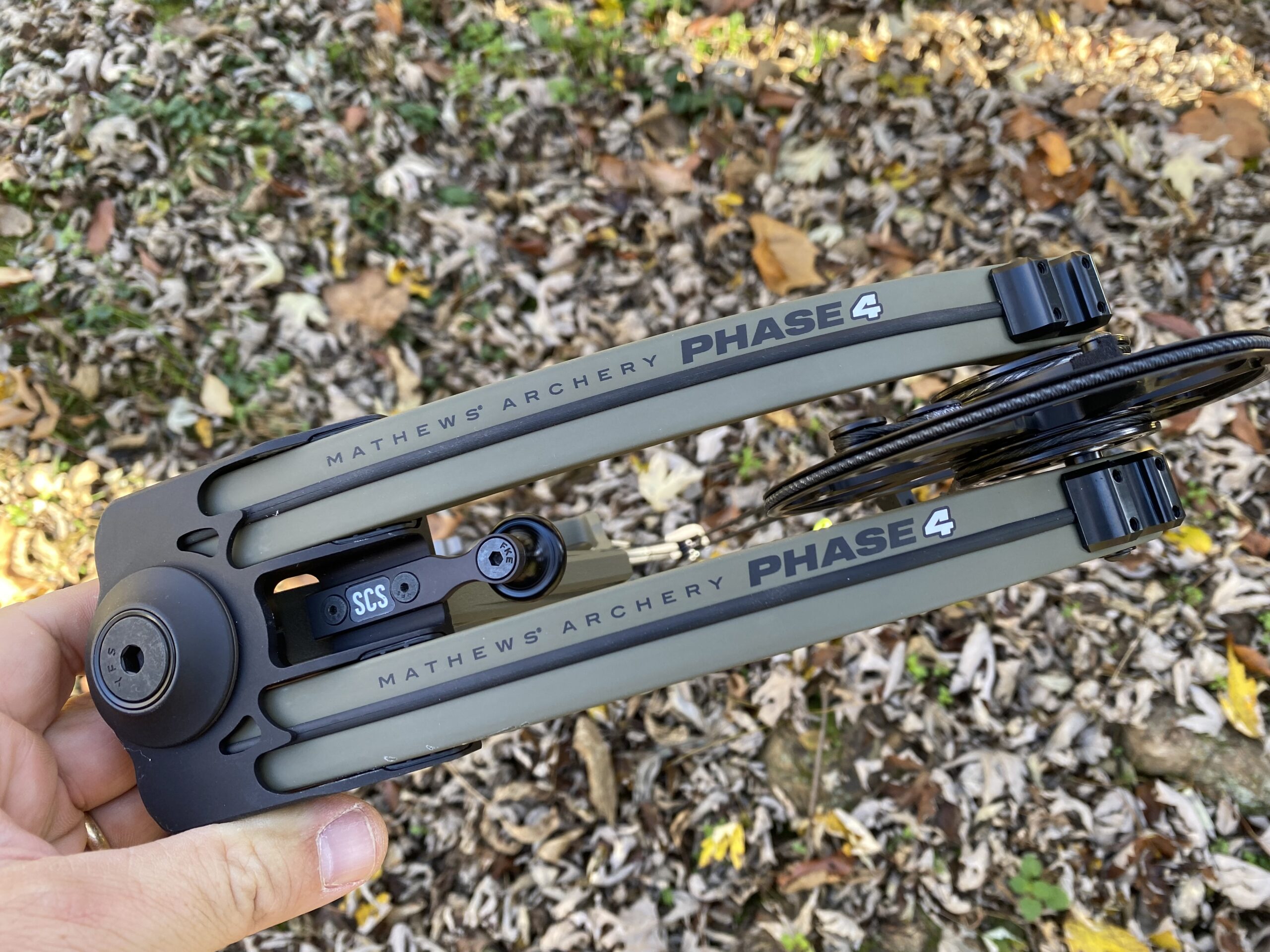
The chief difference between the two is in the limbs. Where the V3X 33 has the typical four limbs employed by a split-limb bow, the Phase 4 33 has eight. They’re assembled in pairs, and each sandwiches a rubber strip that Mathews says is part of its “Resistance Phase Damping.” Think of it as limb dampers built into the limbs.
We’ve never seen anything like this, so I can’t speak to the durability over time. The limbs certainly seem like they’ll hold up. We’ll find out over the coming year. But there’s no doubting their impact on the shooting experience. This bow is whisper quiet and barely produces any hand shock.
Mathews is attacking vibration at the spot where much of it is created—in the limbs. It doesn’t look like much, but the difference is noticeable. (I’ll describe the comparison shooting I did with the Phase 4 33 and the V3X 33 in just a bit.)
Bridge-Lock Stabilizer
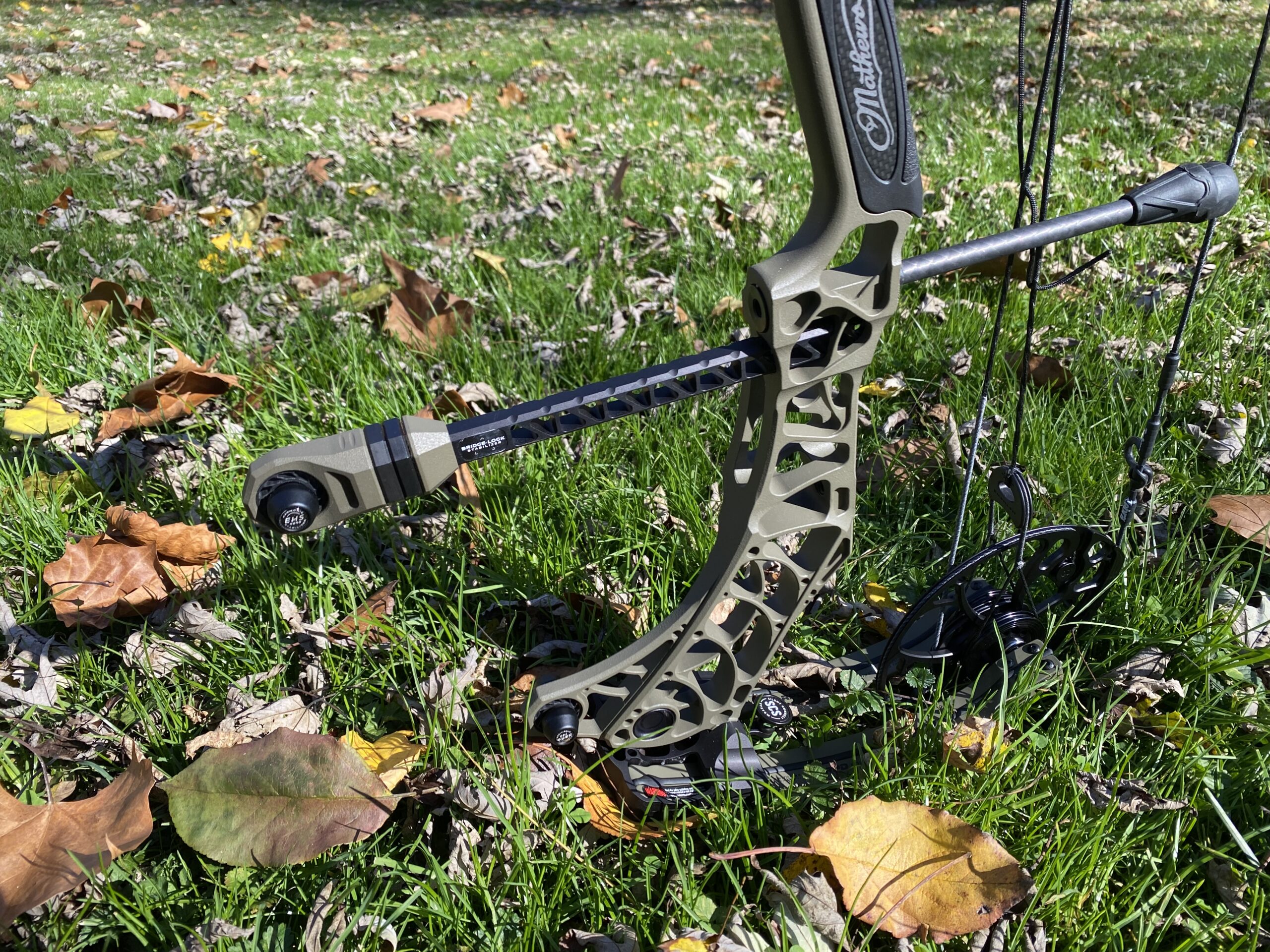
Also new this year is the Bridge-Lock stabilizer system. Continuing the Bridge-Lock accessory system initiated last year with a dovetail cutout in the riser above the shelf to hold a sight, Mathews created another dovetail slot below the standard 5/16-24 stabilizer bushing. That slot can be filled with one of the new Bridge-Lock Stabilizers Mathews is launching as part of its 2023 hunting lineup.
Like the Bridge-Lock sight mount, the stabilizer mount is a more secure way to connect your stabilizer to your bow. Instead of employing a short bolt to carry the load of the stabilizer at the riser connection, the Bridge-Lock slot allows the stabilizer to slid into the center of the riser, where it’s fastened in place with a compression knob.
And no matter what length Bridge-Lock stabilizer you choose, you can customize its length by adjusting its position in the slot. Spaced divots in the stabilizer bar allow adjustments to be made in half-inch increments to get the right balance for you.
Each stabilizer has one of Mathews’ harmonic dampeners in the end, which helps to further kill vibration and noise that the bow might produce. And they carry stackable weights so the bar can be weighted to your specifications. In keeping with the Bridge-Lock design, Mathews also came out with a siderod connection explicitly built to carry the Bridge-Lock stabilizers.
Read Next: The Best Compound Bows of 2022
What’s the Same

Riser
Like the V3X 33, the Phase 4 33 features a huge riser. The axle-to-axle length of this bow is 33 inches, and the riser is just a tick less than that. It’s longer than the riser employed by the Mathews TRX 36 target compound.
By having a riser that’s nearly as long as the axle-to-axle length, Mathews is creating a bow that’s super steady to aim. That big riser wants to stay vertical.
Cable Guard
Also carried over to the Phase 4 is the angled Centerguard cable containment arm. It’s angled down, so the cables slide through the rollers at precisely the halfway point between the cams during the draw cycle. This ensures that the loads put on both cams by the cables are identical, which helps with level nock travel and just ensures consistent performance.
Grip
he Engage grip Mathews has employed the last couple of years is on the Phase 4. It’s a rubber grip that sure feels nice on cold days. It’s a bit rounded on the edge that sits against your hand, though. I don’t like that, so I always take off the Engage and put on a set of Mathews side plates. And you can do that with the Phase 4. The side plates sit on either side of the grip, while your hand sits on a finished portion of the riser. It’s perfectly flat, which I find to be more stable. The rounded ridge down the center of the Engage can cause the bow to torque left or right if your hand rolls.
Cams
The cams once again incorporate special posts that allow use of the Mathews Stay Afield System. This is a simple length of rope that you can attach to a post on each cam, which then allows you to work on the string and cables. It’s basically a portable bow press that weighs nothing, but can be worth ten times its weight if you need to make a repair or adjustment in the field.
Testing the Mathews Phase 4
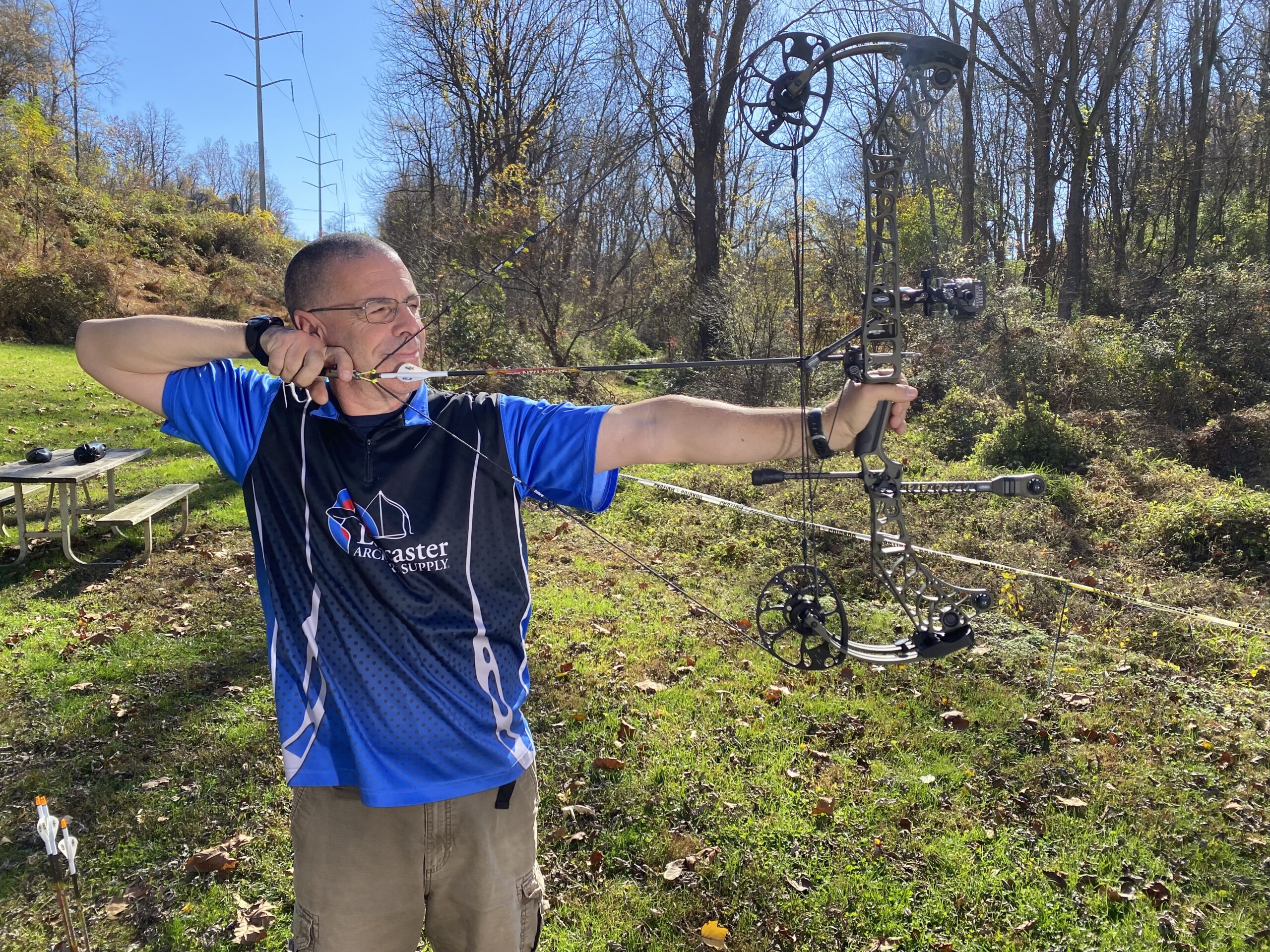
For my review, I borrowed a Phase 4 33 from Lancaster Archery Supply. I set it up to shoot 70 pounds at a 29.5-inch draw length with 85 percent let off. At those specs shooting a 477-grain arrow, I got a speed of 283 fps from the shop chronograph—exactly the same as the V3X 33.
That’s not screaming fast, but it’s fast enough for me. My pin gaps are pretty small on a five-pin sight, with pins set for 20, 30, 40, 50, and 60 yards. This bow is built for accuracy. It’s not a speed bow. I’m okay with that.
V3X 33 vs Phase 4
The very first shot I took with the Phase 4 33, I thought something went wrong. It was so quiet, and I barely felt anything in my bow hand when the string released. It just didn’t seem right. So I shot again. Same thing. The bow’s reaction to the shot was so soft I instantly wondered if my V3X 33 felt like that. I knew that bow was pretty quiet, and I thought it was dead in the hand. So I took a shot with it and then followed with a shot from the Phase 4 33.
As I said earlier, the difference is noticeable. And I never thought of the V3X 33 as a loud or hand-shocky bow. I didn’t think there was that much noise and vibration to drain out. It’s like having beer run down your chin from a glass you thought was empty.
Noise
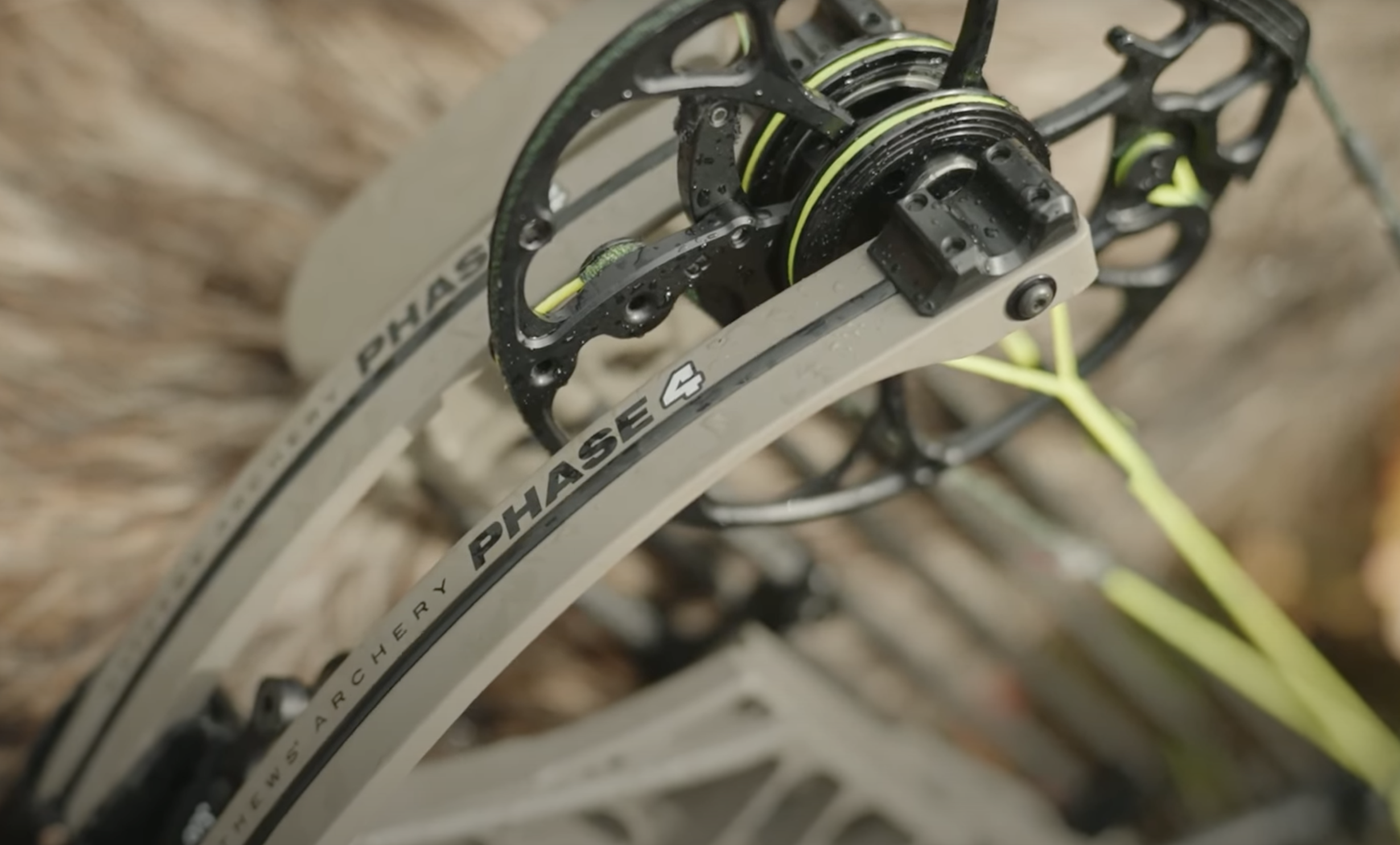
So what’s the benefit of making a quiet bow even quieter? Ask the deer. Anytime you can cut bow noise, it’s better for minimizing animal reactions at the shot. And for quelling vibration that you didn’t even realize was there. The best shot with a bow is one where you’re relaxed because anticipating the thump of the bow string can cause you to tighten your hand and/or arm. The less hand shock there is, the easier it is to keep your body calm until after the arrow is long gone.
Taking that example to the extreme just for illustration, think about how tense you are shooting a .300 Win. Mag. as compared to a .22 LR. You know that big thump is coming from the .300 and your body braces itself. When you shoot the .22, you’re much more relaxed.
Draw Cycle
While the reduced noise and hand shock surprised me, what didn’t was everything else about shooting the Phase 4 33. The big cam makes for a pleasant draw cycle—effort at the front end, followed by a downhill glide to the back wall. It’s got that super long riser just like the V3X 33, which means it holds on target super steady.
Tuning
Tuning the Phase 4 33 was a snap. Set the rest so the center of my arrow was 13/16 inches from the riser, and eyeballed the nock height to get it level. My first shot through paper was perfect—a bullet hole in the center framed by three evenly spaced vane slices.
For advanced tuning, the bow has the Mathews Tophat system, which employs a series of spacer tubes on either side of the cams. If you need to clean up a paper tear, you just change tubes, so the cam moves left or right. Mathews has been using Tophats for several years, so it’s a system I’m familiar and comfortable with. It works. I didn’t need to make any adjustments to the Tophats for my test bow, but I knew what to do if I did.
Accuracy
I busted a few nocks shooting the Phase 4 33 at 20 yards. Tight groups were easy to produce. But where I feel the Phase 4 33 really excels is shooting at distance. It’s just so steady. My pins locked on target at 50 and 60 yards, and the arrows looked like lasers as they bee-lined for the bull’s-eye.
As mentioned earlier, there is a 29-inch version for bowhunters who prefer a shorter bow. I don’t think I would ever choose a shorter bow simply because bows in the 33-35-inch range feel so good to me. I’ve never had an issue maneuvering with one on the ground or in a tree stand, so that’s not an issue I’ve experienced.
Where the Phase 4 is Lacking
Because Mathews added the Bridge-Lock technology to stabilizers this year, which includes a whole line of stabilizers and associated amenities, I’m going to repeat what I stated last year for the V3X 33. Mathews wants you to buy their gear for their bow. No question their stuff is cool and will help you put together a sweet-looking rig that shoots great. But the accessory line means Mathews gets you coming and going.
And those accessories aren’t cheap. The MSRP for the stabilizers is up to $270, depending on length. The siderod mount is $200. Last year, Mathews introduced its low-profile quivers, which take advantage of moving the sight and rest from the side of the riser to the middle to allow a bowhunter to create a bow with the slimmest profile I’ve ever seen. Those quivers will work for the Phase 4 bows, and cost up to $250.
While the Phase 4 33 is expected to cost $1,400, when you add two of the best stabilizers, siderod mount, low-profile quiver, Bridge-Lock sight, and Mathews-branded QAD Integrate rest, you’re looking at a rig that could cost $2,500.
You can indeed transfer all of your old gear from whatever bow you’re upgrading from to the Phase 4. The bow will accept all traditional accessories. But when bowhunters see how cool a Phase 4 can look kitted out with all the Mathews gear, the temptation to spend will hit.
What the Phase 4 Does Best
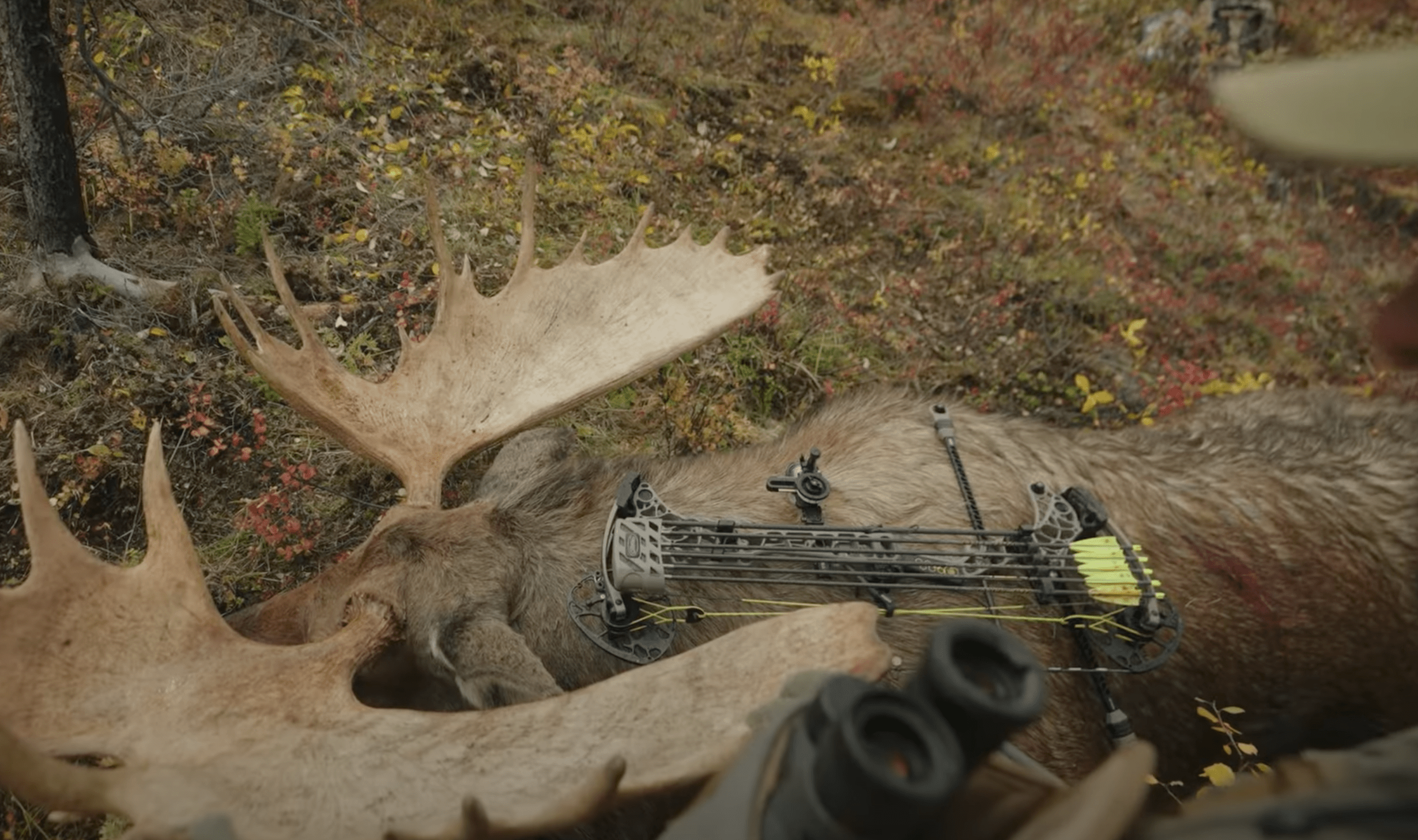
The Phase 4 33 is simply a pleasure to shoot. It draws nice, it holds nice, it’s quiet, and it has virtually no hand shock. The shooting experience is nicer than any bow I’ve ever shot. I haven’t had months behind this bow like I have with the V3X 33 to gauge its reliability and performance in various settings and conditions. But given the similarities between the two bows, I will be wildly shocked if the Phase 4 33 doesn’t perform equally as well.
That’s not how bows are sold, however. They’re sold to buyers who take a bare bow with a rest and maybe a sight and shoot a couple times at a target 5 yards away. All they’re doing is feeling the draw cycle and the shot. In that arena, I can’t think of another compound bow that can hang with the Phase 4 33.
Final Thoughts
There are several bows on the market right now that are quiet and have minimal hand shock. For my money, the Mathews Phase 4 33 leads the pack in that category. All I can say is, you’ve got to shoot one to experience it for yourself. When you do, I think you’ll be as surprised as I was, and move the bar for what a smooth-shooting bow ought to feel like.
